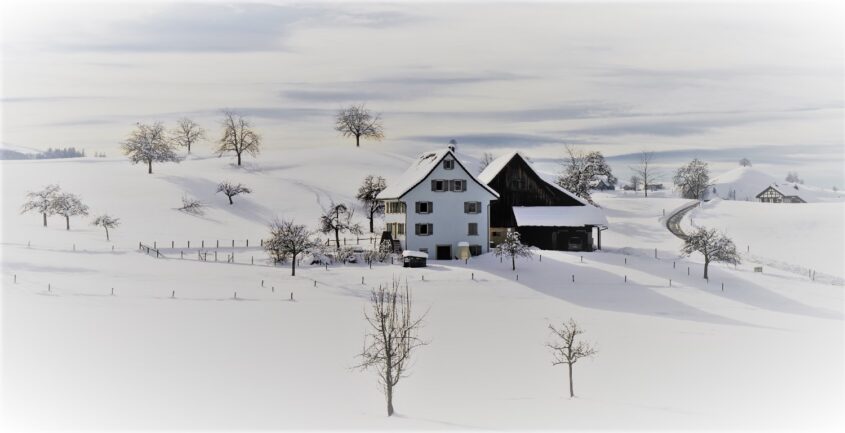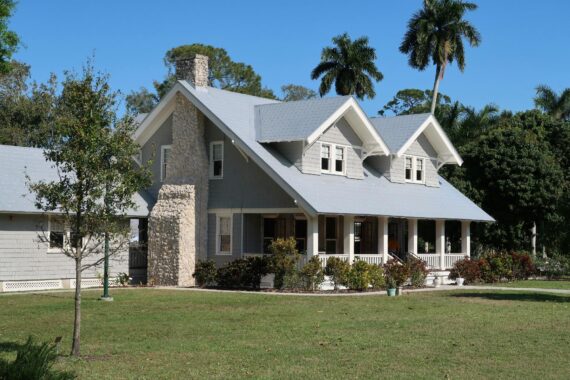Protect Your Farm Building From Snow Load in Winter

Farm buildings are vital to farming operations. They provide shelter, storage space, and protection from the elements. With a bit of forethought and planning, you can build sturdy, safe, and functional farm buildings that will stand longer at the time of test, even in areas known for heavy snowfall. During the winter, the safety of Farm buildings should not be overlooked, especially with the potential of snow loads, which can cause a farm building’s roof to collapse.
A farm building snow load is the downward force on a building’s roof by the weight accumulated by snow and ice. Even the best-engineered buildings can collapse when heavy snow hits strong winds. Whether you keep agricultural machinery or cattle in your barns, a roof fall will undoubtedly cause significant damage. It’s critical to evaluate your roof load and get enough coverage in this case.
How Snow Load can Damage your Buildings
The roof or the entire building structure can fail if the snow load exceeds the weight. If the snow load exceeds the weight and the building was designed to shoulder, or the building was poorly designed or constructed, it will damage the roof of the entry building. It doesn’t take a blizzard to cause many problems. Complete protection of a farm building is very important. An imbalance of drifting snow can cause a domino effect.
Plan for snow loads before you build
Planning for snow loads before you build a farm building is always a great idea. Even at some minimum loads, if the roof isn’t built properly to handle the weight of snow, your entire farm building could collapse. However, modifying a building to meet your area’s desired or estimated snow loads can be time-consuming, and sometimes it may be expensive.
Understanding Snow Load and Property Damage
As we Already discussed, snow loads are the downward force on the roof by the weight of snow; it is very important to understand the cause and chances of property damage. A blizzard isn’t required to wreak havoc on your outbuildings. A domino effect can occur when drifting snow causes one component of a roof to give way. If the snow load exceeds the weight, the building was designed to withstand and/or if the building was constructed improperly, the roof or the entire structure may fail. If you understand the cause of the snow load and the chances of damage, it will help you make the required arrangement before the damage is caused.
Calculate how much snow your building roof can handle.

Even the best-engineered farm structures can collapse when heavy snow hits strong winds. That’s why it’s crucial to evaluate your roof load and have enough insurance in case of a disaster. Always calculate your roof load and prevent heavy snow from collapsing your building roof is a good idea. Calculating the roof load on your building is not an easy task; it requires lots of experience. A ballpark estimate of roof snow load can be made with the following formula given by the University of Wisconsin Cooperative Extension Service.
Calculated Roof Loading (lb/ft2) = Depth (ft) x Density (lb/ft2 /ft depth). The approximate density (lb/ft2 /ft depth) is:
- 5-20 for light snow
- 20-40 for packed snow
- 40-58 for packed snow with ice
- 58 for ice
For example, if a roof with 4 feet of light snow has an estimated roof load of 80 pounds per square foot (4 ft depth X 20 lb/ft2/ft depth density = 80 lb/ft2).
It’s always good to know in advance the roof load limits for your farm building and outbuildings. Rebuild or strengthen them if necessary to resist worst-case snow loads and meet local building codes.
Removing Snow from Farm buildings
Some major roof failures can be prevented with cautious snow removal. To handle the job, always call a professional snow removal provider. This is more dangerous maintenance work due to the mix of heights and ice. Use caution while standing on the roof, make sure to wear a safety harness and secure ladders. Don’t forget to use a snow rake. It’s best to avoid chipping or picking at ice because it can harm the roof.
If you feel comfortable working from the height of your outbuilding, we recommend that you take the following measures first.
Review your farm outbuilding plans for structural details
Verifying inspection records with the county is one approach to figure out how much weight your farm’s structures can support. If the structure passed inspection, you could be confident that it met the minimal snow load criteria for your area when it was erected.
Also Read: Top Home Interior Decorating Secrets To Give A Touch Of Elegance
Monitor your roof signs of structural distress
Keep an eye on the roof of your farm building in winter, especially on buildings with considerable loads. Look for the warning signs of overbearing snow loads, such as bowed trusses, sagging, misaligned and creaking sounds.
Like Metal buildings, wood buildings never show any sign or warning before collapsing.
Confirm your Insurance checklist
A few minutes of insurance check can reassure you during a heavy snow winter. Talk to your insurance company and confirm your insurance policies before a winter storm hits. It is important to ensure peace of mind!
Read insurance policy carefully and ensure that your property insurance covers full building failure due to snow load. Ensure the insurance policy pays for actual replacement costs and include replacement costs for equipment and animals stored in the building. Verify that valuable equipment stored in a farm building is covered under your farm personal property endorsement.









Comments are closed.